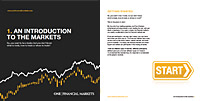

Asia FX turns cautious ahead of U.S. payrolls, dollar hits 3-mth low
By Ambar Warrick
Investing.com-- Most Asian currencies moved little on Friday as caution kicked in ahead of U.S. payrolls data that is likely to affect monetary policy, although dovish signals from the Federal Reserve pushed the dollar to a three-month low.
Regional currencies were also set for strong gains this week as the Federal Reserve flagged smaller interest rate hikes in the coming months- a scenario that is positive for risk-driven assets.
The Japanese yen rose 0.1%, and was the best performing Asian currency this week, up nearly 3% at a three-and-a-half-month high of 135.19 as it recovered further from a 30-year low.
The Chinese yuan fell 0.2%, although speculation that China will relax its strict anti-COVID policies saw the currency set for a 1.7% gain this week.
Growing public discontent with the country’s anti-COVID restrictions sparked a wave of unprecedented protests in the country this week, which also saw the government loosen some quarantine and movement measures in two major cities.
Weak PMI data, which highlighted even more pressure on the Chinese economy in recent months, also drummed up hopes that the government will be forced into relaxing its COVID policies. But Beijing has given no official word on such a move.
Broader Asian currencies were muted on Friday. The South Korean won rose 0.4% and was set to add 2.6% this week, while the Taiwan dollar headed for a weekly gain of 1.3%.
The dollar index and dollar index futures both moved little on Friday, but were set to lose 1.1% this week, their second straight week of losses.
Focus is now on U.S. nonfarm payrolls data due later in the day, which is expected to show that the country’s jobs market cooled slightly in November. The Fed has also targeted some cooling in the labor market as part of its measures against inflation this year.
But Powell warned that U.S. interest rates could peak at higher-than-expected levels, especially if inflation remains stubbornly high in the country.
PCE inflation data, which is the Fed’s preferred gauge of price pressures, was steady at an annualized rate of 6% in October, data showed on Thursday, remaining well above the Fed’s 2% target.
In Southeast Asia, the Thai baht was the best performer this week with a 2.6% gain following an interest rate hike and more hawkish signals from the country’s central bank.
The Indonesian rupiah jumped 0.8% and was the best performer on Friday after strong inflation readings for November suggested that the central bank will keep raising interest rates.
Begin trading today! Create an account by completing our form
Privacy Notice
At One Financial Markets we are committed to safeguarding your privacy.
Please see our Privacy Policy for details about what information is collected from you and why it is collected. We do not sell your information or use it other than as described in the Policy.
Please note that it is in our legitimate business interest to send you certain marketing emails from time to time. However, if you would prefer not to receive these you can opt-out by ticking the box below.
Alternatively, you can use the unsubscribe link at the bottom of the Demo account confirmation email or any subsequent emails we send.
By completing the form and downloading the platform you agree with the use of your personal information as detailed in the Policy.






